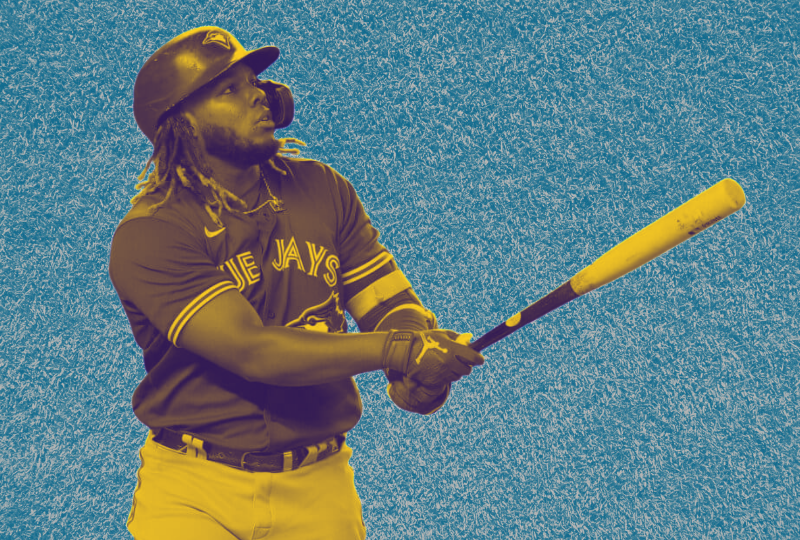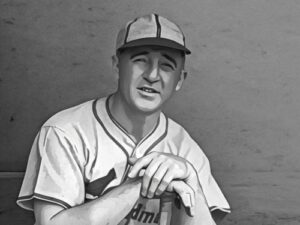Just like pitch counts, 100 was apparently too much. Major League Baseball owners and the MLB Players Association halted the lockout at 99 days on Thursday when they agreed to a new Collective Bargaining Agreement that will govern the game for five years.
The 2022 regular season will begin April 7, and the schedule will be a full 162 games, with both sides agreeing to reschedule the games that were originally scheduled to start March 31 and have been cancelled. Those games will be filled in by playing doubleheaders as needed.
Competitive Balance Tax
Probably the biggest issue that divided the players and the owners was the so-called CBT, or the Competitive Balance Tax.
What is the Competitive Balance Tax?
It’s a penalty that teams pay if they exceed a payroll ceiling. Think of it sort of like a speed limit that for owners and their wallets. While some teams have exceeded the CBT and paid the tax for doing so in the past, it’s become increasingly rare in the last few seasons. From 2016 to 2021, for the first time in baseball since free agency came into being in the mid-1970s, salaries decreased in relative dollars.
The players wanted the CBT to increase a lot, and of course the owners did not. The CBT will increase from $230 million in 2022 to $244 million over the five years of this agreement.
This measure should prompt the bigger-spending teams, like the Dodgers, Yankees, and Mets, to add payroll to their rosters in future years or even as soon as this free agent season, which starts at 6 PM EST tonight.
For as much as this issue has been bandied about as being central to an agreement, the fact is that maybe only 8-10 teams pay close attention to the CBT at all. Most MLB teams, as many as 2/3 of them, don’t spend anywhere near the CBT limit, and never will.
A higher CBT will lift the overall average salary of MLB players, but it will mostly benefit the top 10 percent of MLB players and the most desirable free agents.
MLB Minimum Salary
The players wanted more rewards to the best young players in the game sooner. As it was before, a player had to wait three years to get to arbitration. For most MLB players that meant that they would make the MLB salary minimum for three seasons, regardless of how valuable they are to their teams.
This CBA boosts the MLB minimum salary from $530,000 previously to $700,000 in year one of this deal. It will gradually increase to $780,000.
A higher minimum salary will make a big difference for young players entering the league under a standard contract. The top prospects will still get bonuses and have that money in addition to their salary, but most Year 1-3 players are on standard MLB minimum contracts. This is a big win for those players.
Bonus Pool for Pre-Arbitration Eligible Players
Raising the MLB minimum salary pumps more money to younger players, but the MLBPA also wanted to award the best young players who have tremendous success in the league quickly. That’s why we now have a Bonus Pool in this collective bargaining agreement.
Here’s how it works:
- $50 million will be distributed to the top 100 players based on awards and statistical performance every year.
- The algorithm used to allocate the bonus funds will be developed jointly by the MLBPA and the league.
With this new system, young stars will get financial windfalls long before they are eligible for salary arbitration and free agency. For example, a player like Rookie of the Year winner Randy Arozarena of the Rays would have earned about 3x the amount of money in their second season as they actually did under the old system.
A possible consequence of this bonus pool will be a reduction in the number of teams wanting to negotiate a long-term deal with a young player in their second or third year. Since the best young players will already be getting more money from the bonus pool, teams may see that as a way to save money.
Expansion of the Post-Season
The owners wanted to expand the playoffs to 14 teams. But the players, citing the integrity of the regular season, balked. The two sides settled in 12 teams, adding one more team per league.
In actuality, the players were more worried about the impact a larger playoff pool would have on salaries. If the Yankees and Red Sox, for example, are pretty damn sure they will make the post-season, why would they sign more free agents to add a few wins that aren’t necessary? Time will tell if this notion is true or not.
A major change in the playoff format is the first-round and the elimination of the wild card game. Here’s the new MLB post-season format details:
- Six teams in each league qualify for the postseason: three division winners and the next three teams with the best record.
- Teams are seeded #1 through #6 by regular season record, regardless of their position in their division.
- Ties for playoff spots will be determined by regular season tiebreakers. No play-in games.
- The #1 and #2 seeds will get a bye in the first round.
- The first round will feature a best-of-three format: #3 seed vs #6 seed, and #4 seed vs #5 seed, with one day off in scheduling.
- The second round (still apparently called the Division Series) will be a best-of-five format, with the higher seeds getting home field advantage. Key point here: teams are re-seeded after the first round.
- The League Championship Series and World Series remain the same: seven game format.
What will these changes mean? How will the layoff between the end of the season and the second round impact the #1 and #2 seeds? Is a three-game series fair? How will teams set up their pitching rotations? Will the new format help lower seeds or help the higher-seeds?
One of the things about wild card era has been the decrease in reward to the teams that finish in first place and/or with the best records in their league. Since MLB added a wild card in 1995, 13 teams that didn’t even win their division, have advanced to the World Series. That’s about 25 percent, and some baseball fans have not liked it. Others have been fine with it, like fans of the Marlins, who won the World Series twice as a wild card.
Now that wild card teams have to win a best-of-three series to advance, rather than one game, and now that higher seeds can set their pitching rotations with 3-4 days off, it appears that it should be more difficult for wild card teams to win in the post-season.
The Universal DH
Almost 50 years after it first appeared in the American League as a knee-jerk reaction to increase run scoring, the rule has finally defeated its last holdout: the National League. Starting in 2022, the DH can be used by all teams in every game.
The end of pitchers batting will have a short-term impact as some NL teams scramble to locate a batter who can fill that specialized role. Maybe.
Facts is, baseball teams have been shifting to using more pitchers on their roster, which has led to the need for multi-position utility players. Think Chris Taylor of the Dodgers. As a result, there isn’t room for a one dimensional player like a DH. Sure, Nelson Cruz and a few other sluggers will still fit into a DH role, but many teams will probably see the DH as a spot in the order where they can shuttle in a regular or a bench player.
On-Field Advertising
The league and players agreed to permit advertising on uniforms and equipment. So, expect to see advertising patches and logos on jerseys and caps, helmets etc.
Baseball has a long history of advertising. In fact, the term “bullpen” may originate from the ads for tobacco that featured a bull on ballpark fences. This is a subject that some fans will get ornery about, but it shouldn’t be a big deal.
Pitch Clock, Banning Shifts, and Other Rules Changes
The two sides punted games rule changes to next season, but the writing is on the wall. MLB will most likely add a pitch clock in 2023, and it’s also probably going to start using larger bases. It’s also possible that defensive shifts will be banned.
The two sides agreed to a change in the way rules changes are implemented. Previously the league only had to consult the MLBPA on certain rules changes, and it could institute new rules unilaterally after one year. That window is now 45 days (basically half the length of the off-season) and the committee to discuss rules changes will now include dour seats for the union, as well as one for an umpire. The league will have six seats in the rules committee, so the owners can essentially ram any new rule through.
The pitch clock will help make the game much easier to watch. I applaud any decision to add a pitch clock or a rule that eliminates non-action time in baseball games.
The use of larger bases is curious. It’s been tried in the minor leagues, and the goal is to give batter/runners a split second advantage for being safe, thus leading to more baserunners and more runs. It remains to be seen if this the consequence of such an action. Will teams steal bases after gaining 2-3 inches of the base paths? Not likely. Will run scoring go up appreciably? I doubt it. Run scoring will only increase if teams start to train batters to hit to all areas of the field.
I am opposed to banning shifts, though I like what it might do for the game. I tend to think that offenses should respond to changes in the defense by changing strategy. A rule change isn’t needed to defeat the shift: just hit the damn baseball into the open parts of the field.
Draft Lottery
For the first time ever, MLB will have a draft lottery. Under the lottery, the top six selections in the annual June MLB Amateur Draft will be awarded via lottery.
Odds would be based on the reverse order of winning percentage, with the bottom three clubs each at 16.5%.
The 18 non-postseason clubs would be eligible, though revenue sharing payees would be ineligible to receive lottery selections in three consecutive years, while non-payees would be ineligible to receive lottery selections in consecutive years.
This rule change is designed to halt teams from tanking in order to get the top pick in the amateur draft. I think we’ll find out quickly that a draft lottery will not stop teams from “rebuilding” for years and years. Many owners don’t care whether they win 90 games and make the playoffs. They just want tv rights money, ticket fees, and a “good enough” product to attract fans. Plus, #1 picks in are not an iron-clad guarantee of future success. A #7 pick can have a better career than a #1, and it often happens.
Service Time Manipulation
Players may only be optioned five times per season from now on, which will limit roster manipulation of players. There are apparently a few other items in this CBA that address manipulation of service time for young players, but I could not find those details yet. I’ll update this tory when I do.
Other Items in the CBA
- Free agency remains at six years, and arbitration rights still kick in at three years.
- Players can negotiate deals directly with sports betting companies.






